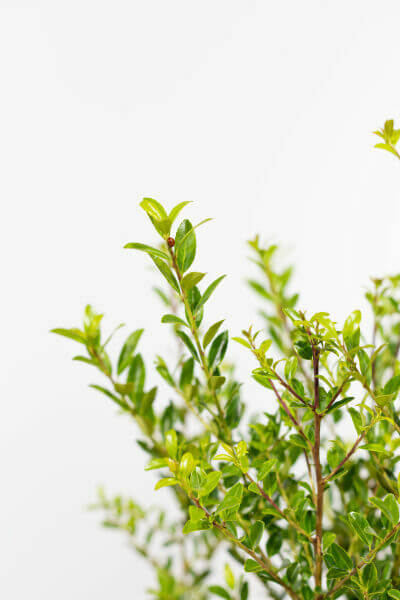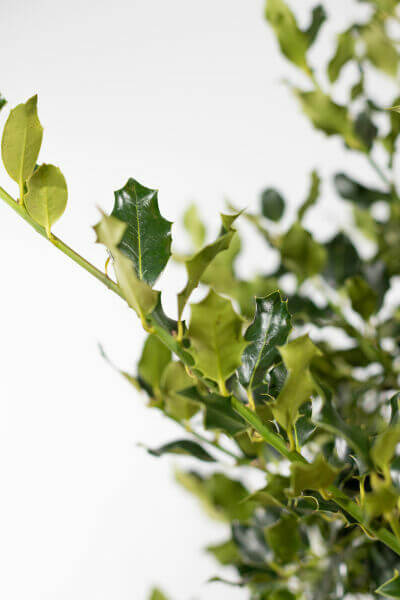Hedge Plants For Garden Design
Enhance your garden's allure with lavish hedge varieties such as Yew (Taxus), Thuja, Laurel, Photinia, and Bamboo, commemorated for their structural integrity and environmental benefits.
Yew and Thuja offer evergreen protection and winter strength, while Laurel offers fast development and broad, fragrant leaves.
Photinia includes seasonal beauty with its vibrant red foliage, and Bamboo lends a low-maintenance, peaceful atmosphere.
These hedges enhance air quality, minimize sound, and create tranquil, private areas.
Proper planting, spacing, and maintenance make sure vigorous growth and eco-friendly consistency.
Explore how these lush ranges can elevate your garden's appeal and well-being.
Key Takeaways
Change Your Garden With Lush Hedge Ranges
- Select Yew for its thick, evergreen development and exceptional durability.
- Opt for Laurel for its quick growth and broad leaves, guaranteeing fast personal privacy.
- Pick Photinia for its vibrant seasonal foliage, which turns a striking dark red.
- Utilize Bamboo for a low-maintenance, winter-hardy hedge with aesthetic appeal.
- Area plants 2-3 per meter and prune frequently for optimal growth and health.
Popular Hedge Plants
When transforming a garden with lavish hedge ranges, it's essential to consider popular hedge plants such as Yew, Thuja, Laurel, and Photinia due to their unique characteristics and advantages.
Yew (Taxus) is extremely respected for its durability and thick, green development, making it a prime option for withstanding landscapes.
Thuja is noted for its evergreen foliage and robust winter durability.
Photinia adds seasonal vibrancy with red leaves that darken in time, developing vibrant visual appeal.
Laurel uses quick development and fragrant, broad leaves, suitable for quick privacy.
Additionally, Bamboo is an excellent choice for atmosphere, offering a low-maintenance, winter-hardy option that boosts the garden's visual with its sophisticated, swaying walking sticks.
These selections cater to a range of horticultural requirements and preferences.
Benefits of Garden Hedges
Garden hedges use a wide variety of benefits, making them a valuable addition to any landscape. These natural barriers are affordable to implement and offer significant wind protection, boosting air blood circulation and contributing to sound decrease. The thick foliage of hedges like Thuja and Beech ensures personal privacy by blocking exposure, developing a remote and peaceful environment.
Hedges likewise play an important role in microclimate guideline, offering a steady environment that cultivates plant development and minimizes temperature level changes. Their intricate leaf structures filter toxins, improving air quality and adding to a healthier garden environment.
Furthermore, hedges excel in noise decrease, taking in and deflecting acoustic waves to lower ambient sound levels. This dual performance of offering both visual and acoustic personal privacy enhances the total tranquility and visual appeal of any garden.
Planting and Upkeep Tips
For a successful hedge, precise preparation of the planting location is important. Guarantee the soil has proper pH and drain to support strong root advancement.
Space the plants appropriately for the picked types. Water the hedge frequently during its initial development phase, adjusting as needed with seasonal changes.
Implement a organized pest control and illness prevention method, using organic or chemical treatments when necessary. Routinely check for aphids, mites, and fungal infections.
Apply mulch to retain moisture and reduce weeds. Seasonal pruning promotes thick development and air circulation, important for plant health.
Following these standards will assist you cultivate a dynamic, well-maintained hedge that boosts the beauty of your garden.
Spacing and Cutting Guidelines
Spacing and Cutting Guidelines
Proper spacing and cutting are important for cultivating healthy, visually appealing hedges. Sufficient spacing makes sure each plant receives sufficient nutrients, light, and airflow.
Follow these guidelines for optimal hedge maintenance:
- Spacing: Position hedge plants 2-3 plants per meter to motivate robust development.
- Pruning Techniques: Routine pruning is essential for maintaining preferred hedge height and shape. Cut new development in summer season and cut back older wood during winter.
- Seasonal Care: Adjust trimming approaches and schedules according to seasonal requirements to make sure plant health.
- Hedge Height: Frequently monitor and cut to keep the wanted hedge height and accomplish uniform visual appeals.
Complying with these actions will ensure your hedge flourishes, enhancing both the appeal and performance of your garden.
Choosing the Right Hedge
Picking the Right Hedge
Choosing the suitable hedge involves examining elements such as mature height, foliage density, and ecological durability. Successful hedge plant choice requires comprehending each species' growth characteristics and site-specific flexibility.
For example, Yew (Taxus) provides excellent longevity and dense development, while Thuja is significant for its winter season resilience. In addition, considering maintenance requirements is vital; fast-growing species like Laurel or Privet demand routine trimming, whereas low-maintenance alternatives like Bamboo or Ivy might be more effective for those seeking very little maintenance.
Ecological elements such as soil type, light availability, and moisture conditions must also direct the selection process. This careful approach ensures the selected hedges will thrive, offering both aesthetic and functional advantages to the garden landscape.
Shipment and Planting Guidance
To guarantee your hedge plants thrive, they must be provided by specialized couriers and planted immediately upon arrival.
Follow these essential steps for successful planting:
- Soil Preparation: Improve the soil with raw material to enhance drain and nutrient content.
- Planting Depth: Produce a trench two times the width and equivalent to the depth of the root ball.
- Watering Techniques: Water thoroughly after planting, keeping the soil regularly damp however not saturated.
- Mulching: Apply a layer of mulch to keep wetness and reduce weeds.
Customer Assistance and Service
Offered the crucial function of prompt help in horticultural pursuits, our customer support team is readily available six days a week through telephone, email, and social media to provide skilled suggestions and promptly attend to any issues. Their commitment to fast response times makes sure consumer complete satisfaction by resolving questions associated with plant health, optimum planting approaches, and maintenance schedules.

Schedule
-------------------
Within 24 hours
This detailed support group, reinforced by an outstanding 9.3/ 10 client ranking, highlights our dedication to enhancing the gardening experience for every client.
Frequently Asked Questions
For How Long Does It Consider Hedge Plants to Develop?
Hedge plants normally need one to 3 years to end up being totally developed, with the specific period differing by types and growing conditions.
Reliable care throughout this vital duration is vital for robust development. Consistent watering, watchful weed control, and suitable fertilizer application are pivotal in promoting strong root development.
For example, fast-growing types like Laurel might develop quicker, while slower-growing varieties such as Yew might take longer. Diligent maintenance speeds up the facility procedure, resulting in healthy and dense hedges.
What Are the Best Hedge Plants for Privacy?
The concern of the finest hedge plants for personal privacy involves evaluating evergreen and deciduous alternatives.
Evergreen hedges like Thuja, Laurel, and Cypress supply year-round protection, making sure constant privacy.
In contrast, deciduous hedges such as Beech offer seasonal personal privacy, shedding leaves in cooler months.
Secret maintenance tips for personal privacy hedges consist of regular cutting, fertilizing in spring, and appropriate spacing-- generally 2 to 3 plants per meter.
Additionally, constant watering and persistent weed removal are vital for promoting healthy, dense growth.
Can Hedge Plants Bring In Wildlife to My Garden?
Yes, hedge plants can draw in wildlife to your garden by providing necessary benefits like shelter, food, and nesting websites, consequently enhancing regional biodiversity. For circumstances, yew, holly, and laurel are excellent for bring in birds, while ivy supports a variety of pests.
However, it's crucial to note that there are some downsides, such as increased maintenance to handle pests and regular maintenance. Carefully choosing and keeping hedge varieties can assist stabilize these drawbacks and advantages, eventually fostering a sustainable and vibrant community in your garden.
Exist Any Flowering Hedge Plants Available?
Yes, there are flowering hedge plants offered that can boost the appeal of your garden.
For instance, Elaeagnus, also understood as Olive Willow, produces fragrant white flowers in the fall, including a touch of sophistication.
Photinia, another popular choice, showcases dynamic red leaves that grow into a rich green, producing a vibrant visual effect throughout the seasons.
To ensure these plants prosper, it's necessary to practice proper pruning techniques and seasonal maintenance, such as cutting brand-new development in the summer season and cutting back in the winter.
These steps will help preserve the health and visual appeal of your blooming hedges.
How Do I Avoid Bugs in My Hedge Plants?
To avoid pests in hedge plants, employ natural pest control methods and maintain proper hedge care. Introduce useful bugs like ladybugs, which take advantage of damaging insects, to develop a well balanced environment.
Routinely examine your hedges for indications of invasion and without delay get rid of any afflicted more info parts to prevent the spread. Guarantee the health of your hedges by applying balanced fertilizers and offering adequate water.
Utilize mulching to retain soil wetness and correct spacing to minimize plant stress and promote robust growth. These practices collectively assist in decreasing insect problems and maintaining a healthy hedge.
Conclusion
In essence, choosing the ideal hedge ranges such as Yew, Thuja, and Laurel can change any garden into a peaceful haven. These plants supply year-round plant, improve aesthetic appeal, and offer useful benefits like sound reduction and wind protection.
Proper planting strategies, accurate spacing, constant watering, and seasonal cutting are important for optimal development.
Reliable shipment services and expert customer assistance make sure a seamless experience from purchase to planting, making it easier than ever to raise your outside area.
Garden hedges offer a wide range of advantages, making them an important addition to any landscape. These natural barriers are economical to implement and supply considerable wind defense, improving air circulation and contributing to sound reduction. The thick foliage of hedges like Thuja and Beech makes sure privacy by blocking exposure, developing a peaceful and remote environment.

Pruning Techniques: Regular pruning is necessary for keeping preferred hedge height and shape. Trim brand-new growth in summer and cut back older wood throughout winter season.